Kodak Pro Image 100 Color Negative Film Handleiding
Kodak
Niet gecategoriseerd
Pro Image 100 Color Negative Film
Bekijk gratis de handleiding van Kodak Pro Image 100 Color Negative Film (4 pagina’s), behorend tot de categorie Niet gecategoriseerd. Deze gids werd als nuttig beoordeeld door 111 mensen en kreeg gemiddeld 3.8 sterren uit 56 reviews. Heb je een vraag over Kodak Pro Image 100 Color Negative Film of wil je andere gebruikers van dit product iets vragen? Stel een vraag
Pagina 1/4

©Eastman Kodak Company, 1997
TECHNICAL DATA / COLOR NEGATIVE FILM July 1997 • E-4L
A-009 Month 19 96
KODAK PROFESSIONAL
PRO IMAGE 100 Color Negative Film
DESCRIPTION
KODAK PROFESSIONAL PRO IMAGE 100 Color
Negative Film is a medium speed (EI 100) film that features
high color saturation, accurate color and pleasing skin-tone
reproduction, and good underexposure latitude. It is intended
for portrait and social applications, and can be stored at room
temperature—even in hot, humid climates. Its printing
characteristics are similar to those of KODAK GOLD Films
to help simplify printing for photofinishers.
DARKROOM RECOMMENDATIONS
Do not use a safelight. Handle unprocessed film in total
darkness.
STORAGE AND HANDLING
Load and unload your camera in subdued light.
Store unexposed film at room temperature. For best
results, store film at 21°C (70°F) or lower, and process film
as soon as possible after exposure.
Protect negatives from strong light, and store them in a
cool, dry place. For more information about storing
negatives, see KODAK Publication No. E-30, Storage and
Care of KODAK Photographic Materials—Before and After
Processing.
FEATURES BENEFITS
• Outstanding flesh-tone
reproduction, color
accuracy, and saturation
• The film of choice for
portrait and social
photographers
• Intended for room-
temperature storage • No need for refrigerated
storage
• Excellent latent-image-
keeping characteristics • Excellent consistency
• Excellent processing
robustness
• Printing characteristics
similar to those of
KODAK GOLD Films
• Can be printed on the same
channel as the family of
KODAK GOLD Films
EXPOSURE
Exposure Compensation
Use the filter recommendations and exposure adjustments in
the table below under uniform lighting.
Daylight
Use the exposures in the table below for average frontlit
subjects from two hours after sunrise to two hours before
sunset.
Light Source
KODAK
WRATTEN
Gelatin Filter*
* For best results without special printing.
Exposure
Adjustment
Daylight or Electronic Flash None None
Photolamp (3400 K) No. 80B +12⁄3 stops
Tungsten (3200 K) No. 80A +2 stops
Lighting Conditions Shutter Speed
(second)
Lens
Opening
Bright or Hazy Sun on
Light Sand or Snow 1/125 f/16
Bright or Hazy Sun
(Distinct Shadows) 1/125 f/11*
* Use f/5.6 for backlit close-up subjects.
Weak, Hazy Sun
(Soft Shadows) 1/125 f/8
Cloudy Bright
(No Shadows) 1/125 f/5.6
Heavy Overcast or Open
Shade†
† Subject shaded from the sun, but lighted by a large area of clear sky.
1/125 f/4

2KODAK PROFESSIONAL PRO IMAGE 100 Color Negative Film • E-4L
Electronic Flash
Use the guide number in the following table as a starting
point for your equipment. Select the unit output closest to the
number given by your flash manufacturer, then find the
guide number for metres or feet.
To determine the lens opening, divide the guide number
by the flash-to-subject distance. If negatives are consistently
too dense (overexposed), use a higher guide number; if they
are too thin (underexposed), use a lower number.
Fluorescent and High-Intensity Discharge
Lamps
Use the color-compensating filters and exposure adjustments
in the following tables as starting points to expose this film
under fluorescent or high-intensity discharge lamps. For
critical applications, make a series of test exposures under
your actual conditions.
To avoid the brightness and color variations that occur
during a single alternating-current cycle, use exposure
times of 1/60 second or longer with fluorescent lamps; with
high-intensity discharge lamps, use exposure times of
1/125 second or longer.
Unit Output (BCPS*)
* BCPS = beam candlepower seconds
Guide Number for Distances in
Metres/Feet
350 12/40
500 15/50
700 18/60
1000 21/70
1400 26/85
2000 30/100
2800 36/120
4000 42/140
5600 50/170
8000 60/200
Type of
Fluorescent Lamp
KODAK Color
Compensating
Filters
Exposure
Adjustment
Daylight 40R +2⁄3 stop
White 20C + 30M +1 stop
Warm White 40B +1 stop
Warm White Deluxe 30B + 30C +1 1⁄3 stops
Cool White 30M +2⁄3 stop
Cool White Deluxe 20C + 10M +2⁄3 stop
Note: When you don’t know the type of fluorescent lamps,
try a 10C + 20M filter combination and increase exposure by
2
⁄
3
stop; color rendition will probably be less than optimum.
Note: Some primary color filters were used in the previous
tables to reduce the number of filters and/or to keep the
exposure adjustment to a minimum. Red filters were
substituted for equivalent filtration in magenta and yellow.
Blue filters were substituted for equivalent filtration in cyan
and magenta.
Adjustments for Long and Short Exposures
No filter corrections or exposure compensation is required
for exposures from 1/10,000 second to 10 seconds.
PROCESSING
Process this film in KODAK FLEXICOLOR Chemicals for
Process C-41.
JUDGING NEGATIVE EXPOSURE
You can check the exposure level with a suitable electronic
densitometer equipped with a filter such as a KODAK
WRATTEN Gelatin Filter No. 92 or the red filter for
Status M densitometry. Depending on the subject and the
light source used for exposure, a normally exposed and
processed color negative measured through the red filter
should have the approximate densities listed below.
Because of the extreme range in skin color, use these red
density values for a normally lighted forehead only as a
guide. For best results, use a KODAK Gray Card (gray side).
High-Intensity
Discharge Lamp
KODAK Color
Compensating
Filters
Exposure
Adjustment
High-Pressure Sodium
Vapor 70B + 50C +3 stops
Metal Halide 10R + 20M +2⁄3 stop
Mercury Vapor with
Phosphor 20R + 20M +2⁄3 stop
Mercury Vapor without
Phosphor 80R +1 2⁄3 stops
Area Measured Density
Reading
The KODAK Gray Card (gray side) receiving
the same illumination as the subject 1.03 to 1.23
The lightest step (darkest in negative) of a
KODAK Paper Gray Scale receiving the
same illumination as the subject
1.43 to 1.63
The highest diffuse density on a normally
lighted forehead
— light complexion
— dark complexion 1.33 to 1.63
1.08 to 1.48

KODAK PROFESSIONAL PRO IMAGE 100 Color Negative Film • E-4L 3
CURVES
Characteristic Curves
LOG EXPOSURE (lux-seconds)
3.0
0.0
2.0
DENSITY
1.0
2.0
3.0
4.0
1.0 0.0 1.0
Densitometry:
Exposure:
Process: C-41
Daylight
Status M
B
G
R
F009_0052AC
Spectral-Sensitivity Curves
F009_0055AC
700 750650600550500450400350300250
*Sensitivity = reciprocal of exposure (erg/cm ) required
to produce specified density
WAVELENGTH (nm)
2
LOG SENSITIVITY
0.0
*
1.0
2.0
3.0
4.0
Status M
1/50 second
Process:
Effective Exposure:
Densitometry:
C-41
Density: 0.2 above D-min
Yellow-
Forming
Layer
Magenta-
Forming
Layer
Cyan-
Forming
Layer
Spectral-Dye-Density Curves
NOTICE: The sensitometric curves and data in this publication represent product tested
under the conditions of exposure and processing specified. They are representative of
production coatings, and therefore do not apply directly to a particular box or roll of
photographic material. They do not represent standards or specifications that must be met
by Eastman Kodak Company. The company reserves the right to change and improve
product characteristics at any time.
F009_0053AC
500
0.0
400
WAVELENGTH
(
nm
)
600
DIFFUSE SPECTRAL DENSITY
1.0
0.5
2.0
1.5
2.5
700
Typical densities for a midscale neutral subject
and D-min.
C-41
Process:
Midscale Neutral
Minimum Density
Product specificaties
| Merk: | Kodak |
| Categorie: | Niet gecategoriseerd |
| Model: | Pro Image 100 Color Negative Film |
Heb je hulp nodig?
Als je hulp nodig hebt met Kodak Pro Image 100 Color Negative Film stel dan hieronder een vraag en andere gebruikers zullen je antwoorden
Handleiding Niet gecategoriseerd Kodak

27 Augustus 2024

19 Maart 2024

18 Juli 2023

18 Juli 2023

18 Juli 2023

18 Juli 2023

18 Juli 2023

18 Juli 2023

18 Juli 2023

18 Juli 2023
Handleiding Niet gecategoriseerd
- BZBGear
- WAYDOO
- RCBS
- Oecolux
- NZXT
- Netis
- Bigben
- Leisure
- Royal Sovereign
- AMERRY
- Reloop
- Newstar
- Danby
- J5create
- Best
Nieuwste handleidingen voor Niet gecategoriseerd

31 Juli 2025
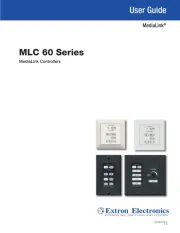
31 Juli 2025
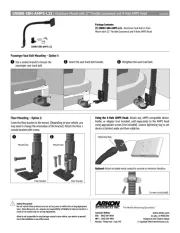
31 Juli 2025
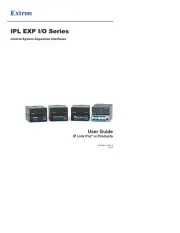
31 Juli 2025
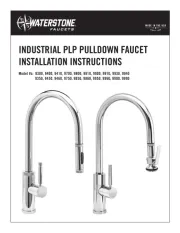
31 Juli 2025
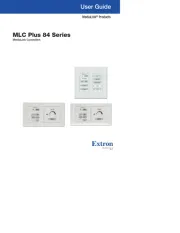
31 Juli 2025

30 Juli 2025
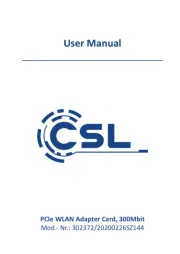
30 Juli 2025
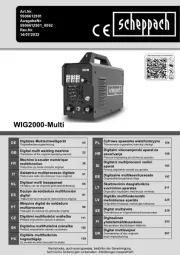
30 Juli 2025
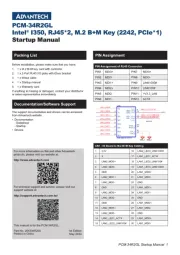
30 Juli 2025